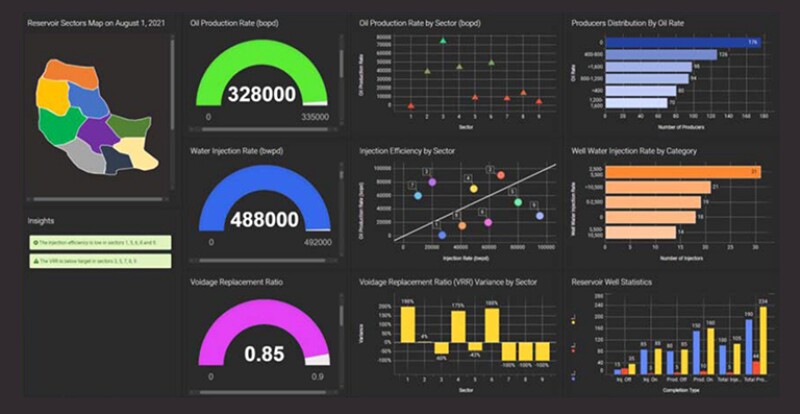In the complete paper, the authors discuss the development of an end-to-end waterflooding-optimization system that provides monitoring and surveillance dashboards with artificial-intelligence (AI) and machine-learning (ML) components to generate and assess insights into operational efficiency in an automated manner. The system allows for fast screening of waterflooding performance at diverse levels, enabling prompt identification of opportunities for immediate uptake into an opportunity-management process and for evaluation in an AI-driven production forecast or a reservoir simulator.
Monitoring and Surveillance Dashboards
The system consists of a series of dashboards covering both subsurface and surface elements. The production data foundation, the data-management platform, can connect to multiple data sources, simplifying data-preparation and -ingestion processes.
The intelligent monitoring and surveillance section consists of monitoring and surveillance dashboards focusing on six key indicators: production scorecard, injection scorecard, injection efficiency, voidage replacement ratio, injection‑water quality, advanced analytics, and opportunity management.
The system consists of different modules such as Field, Reservoir, Sector, Pattern, Offset Wells, Surface Facilities, and Advanced Analytics. Although each module contains some automation aspects, the Advanced Analytics module houses most of the automation and ML. The modules are detailed in the complete paper.
Automation and ML
Type Well Analysis (TWA). TWA can be used to determine which group a well belongs to by estimating P10, P50, and P90 metrics for all wells at the field, sector, or pattern level.
A well that was once a high performer but is now underperforming is a strong candidate for further investigation.


